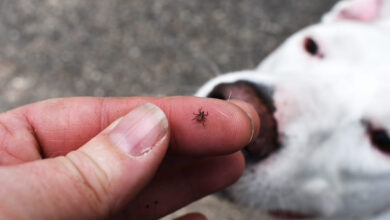How To Protect Window Sills From Dog Scratches

1. Introduction
Dogs are often our beloved family members, but they can also be destructive to our homes. One of the most common areas of damage caused by dogs is to window sills. Scratching and chewing can cause significant damage to window sills, leaving them looking unsightly and even causing them to become structurally weakened. Fortunately, there are several ways to protect window sills from dog scratches and chewing. In this article, we will discuss the reasons for protecting window sills from dog scratches, the best materials for protection, how to train your dog to avoid scratching the windowsills, and strategies for keeping dogs away from windowsills.
2. Reasons for Protecting Window Sills from Dog Scratches
Window sills are an important part of any home, providing a decorative touch as well as structural support for windows. But if a dog is allowed to scratch or chew on them, it can cause significant damage that may require costly repairs or replacements. Not only can it be unsightly, but it can also weaken the structure of the window sill, leading to further problems down the line. Therefore, it is important to take steps to protect window sills from dog scratches and chewing in order to prevent this type of damage.
3. Choosing the Right Material for Window Sill Protection
When choosing a material for protecting your window sills from dog scratches and chewing, it is important to consider several factors. First, you will want to choose a material that is durable and long-lasting so that it can withstand your dog’s scratching and chewing without needing frequent replacement. Second, you will want to choose a material that is easy to clean so that any dirt or debris left behind by your pet can be quickly wiped away with minimal effort. Finally, you will want to choose a material that is aesthetically pleasing so that it does not detract from the look of your home’s interior design.
4. Training Your Dog to Avoid Scratching the Windowsills
One of the most effective ways of protecting window sills from dog scratches and chewing is by training your pet not to do it in the first place. This involves teaching your dog that scratching or chewing on window sills is not acceptable behavior and should be avoided at all costs. To do this, you will need to provide positive reinforcement when your pet refrains from scratching or chewing on the windowsill, such as giving them treats or verbal praise. Additionally, you may need to provide negative reinforcement when they do scratch or chew on the windowsill in order to discourage this behavior in the future.
5. Installing Protective Coverings on Your Windowsills
In addition to training your pet not to scratch or chew on window sills, you may also want to install protective coverings over them as an additional layer of protection against damage caused by dogs. There are many different types of protective coverings available on the market today, including plastic guards that fit directly onto windowsills as well as fabric covers that can be draped over them for a more decorative look. When choosing a protective covering for your windowsills, make sure that it is made of a durable material so that it can withstand your pet’s claws and teeth without becoming damaged itself.
6. Benefits of Using Protective Coverings on Windowsills
In addition to protecting window sills from dog scratches and chewing, using protective coverings can also offer several other benefits for your home’s interior design scheme. For example, fabric covers come in a variety of colors and patterns so you can find one that complements your existing décor perfectly while still providing protection against damage caused by pets. Additionally, some protective coverings are designed with additional features such as insulation or soundproofing which can help reduce energy costs while making your home more comfortable overall.
7. Different Types of Protective Coverings for Window Sills
When choosing a protective covering for your windowsill there are several different types available on the market today including: plastic guards; fabric covers; metal guards; rubber mats; and adhesive strips & films. Each type has its own advantages and disadvantages depending on factors such as cost effectiveness; durability; ease of installation; aesthetic appeal; insulation qualities; soundproofing capabilities; etc., so make sure you research each type thoroughly before making a decision about which one would be best suited for your needs and preferences.
8 . Tips for Installing Protective Coverings on Window Sills
When installing protective coverings on window sills there are several tips you should keep in mind in order ensure they stay in place and provide adequate protection against damage caused by pets: make sure they fit snugly around all edges of the windowsill so they don’t slip off easily; use heavy-duty adhesives if necessary (such as double-sided tape) in order ensure they stay securely attached; use rubber mats instead of plastic guards if possible as they provide better grip against slipping; etc.,
9 . Additional Strategies for Keeping Dogs Away from Window Sills
In addition to installing protective coverings on window sills there are several other strategies you can employ in order keep dogs away from them: use bitter sprays or deterrents near windows (which emit unpleasant odors when dogs come near); place furniture near windows (such as chairs) so dogs won’t have access; block off access with baby gates or fences if necessary; etc.,
10 . Conclusion
Protecting window sills from dog scratches and chewing is an important step in maintaining both the appearance and structural integrity of your home’s interior design scheme. By taking steps such as training your pet not to scratch or chew on windows sills; installing protective coverings over them; using deterrents such as bitter sprays or furniture placement; etc., you can ensure that these areas remain undamaged while still allowing your pet access throughout the house without worry!




